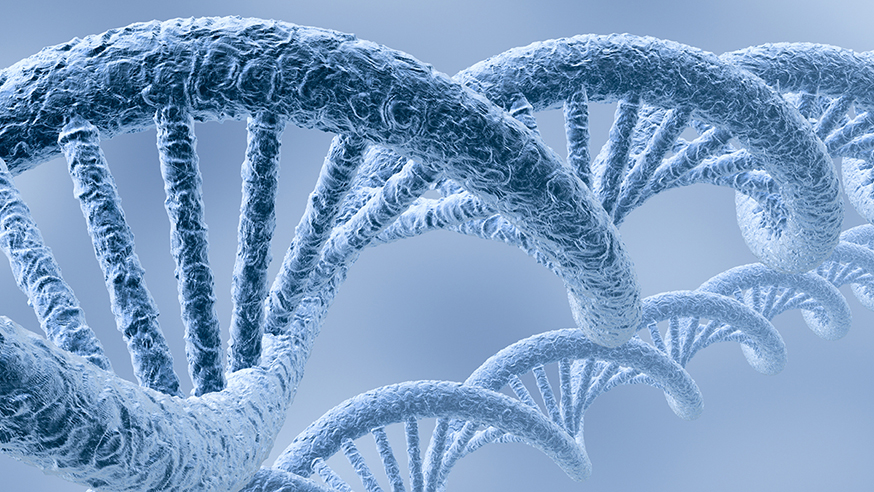
This process is amazing – it turns a small bundle of cells into a funny, happy and entirely unique small person with endless potential. Unfortunately this cell proliferation sometimes goes wrong.
Cancer arising in childhood is different to adult cancer. Most common paediatric cancers occur almost exclusively in children and ‘the big four’ adult cancers almost never occur in children. In adults, most cancers develop as a result of an accumulation of genetic alterations over many years.
These mutations are often a result of environmental exposures such as tobacco smoke, diet and ultraviolet light. In contrast, many paediatric malignancies develop as the result of defects in a few key genes arising in the progenitor cells during early development.
In our related news story, experts call for genetic testing to personalise treatment for all children assessed for new cancer treatments.
Long-term side effects
Despite these differences the majority of childhood cancers are currently treated with the same conventional chemotherapy drugs used for adult cancers, these generally work by killing all rapidly growing cells. Young children are often given the most intensive chemotherapy regimens because of their capacity to regenerate (and hence survive more intensive treatment).
However, despite this, for a number of solid tumours of childhood, survival rates remain below 50%. Furthermore, those who do survive suffer many weeks and months in hospital with devastating symptoms including severe pain, infections, vomiting, diarrhoea, hair loss and many more.
There are often also significant long-term side effects, associated with the effects of the cancer itself and receiving such toxic treatments at a young age.
The personal and societal impact of childhood cancer is devastating in terms of either living with long-term consequences or the years of potential life lost. Childhood cancer is becoming a global health priority, with almost 100,000 children dying every year from cancer.
However, as individually rare diseases, there is little financial incentive for pharmaceutical companies to research and manufacture compounds specifically for children and this presents a particular challenge for the paediatric oncology research community.
Repurposing targeted drugs
In some adult cancers, improved outcomes are starting to be seen with the development of new drugs that specifically target the genetic alterations driving the cancer – so called ‘precision medicine’.
Furthermore, because these drugs selectively target genetic alterations that are only found in cancer cells they are less toxic to healthy cells, and therefore are likely to be associated with fewer side effects.
As children’s cancer arises from a comparatively small number of genetic alterations in developing cells it is often easier to identify the alteration that is driving the cancer and this is one reason why therapeutic targeting of genetic alterations in children’s cancers may be more effective than in adult cancers.
Approximately half of the genetic alterations detected in children’s cancers are thought to be treatable with targeted compounds developed for adult cancers. Therefore, there is great scope for potential benefit in the repurposing of targeted drugs developed for adults in children.
To make this repurposing a reality for all children with cancer in the UK, we need a programme for analysing the genetic profiles of their tumours at diagnosis, and particularly at relapse.
Genetic sequencing could help direct children to trials of existing targeted treatments that might prove effective. And the information we could gather would also prove invaluable for research to better understand each cancer and find new targeted therapies, which could then be trialled as early as possible.
The NHS in England is working on introducing a Genomic Medicine Service, which should expand access to sequencing. With additional resources and infrastructure, this could be a fantastic opportunity for significantly scaling up genomic analysis in childhood cancer, if the funding is made available.
Regulation disadvantages
Unfortunately accessing targeted compounds developed for adults, for use in children remains difficult, both because of the lack of return on investment for drug companies and the significant limitations in regulations.
Current European Union law states that if a disease does not occur in children then pharmaceutical companies can apply for a waiver for the development of that drug in children. One example of how this regulation disadvantages children is the drug crizotinib. Crizotinib targets genetic alterations in the ALK gene, which are found in lung cancer.
The company developing crizotinib successfully obtained a waiver for paediatric development on the basis that lung cancer does not occur in children. However genetic alterations in the ALK gene do occur in a number of children’s cancers including a type of lymphoma known as ALCL.
It has since been shown that crizotinib is effective in children with ALCL but not without significant and unnecessary delay. This highlights the need to change European legislation to mandate development of drugs for children based on the genetic alteration rather than the disease.
The ICR is an internationally leading research centre in the study of childhood cancers and cancers in children, teenagers and young adults.
Increased commitment and collaboration
Another thing that sets children apart from adults is that they are politically powerless. For children with cancer we must fulfil our responsibility to protect some of the most vulnerable members of society.
Parent organisations are an important force to affect change, but this in turn must be matched by increased commitment and collaboration between all of the other stakeholders, including industry, government, academia and charities.
In conclusion, there is an urgent need for the clinical development of targeted drugs for childhood cancer, and significant promise that they will be more effective and less toxic than conventional therapy.
However, the barriers to the clinical development of drugs for childhood cancer are great. Political will and true collaboration between all stakeholders as well as greater investment in research are urgently needed in order to bring new, better treatments into the clinic.